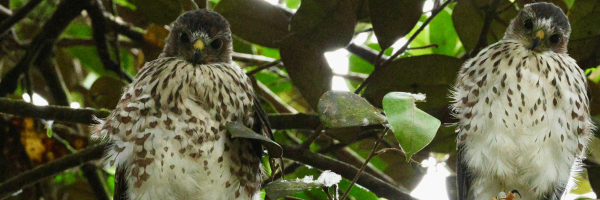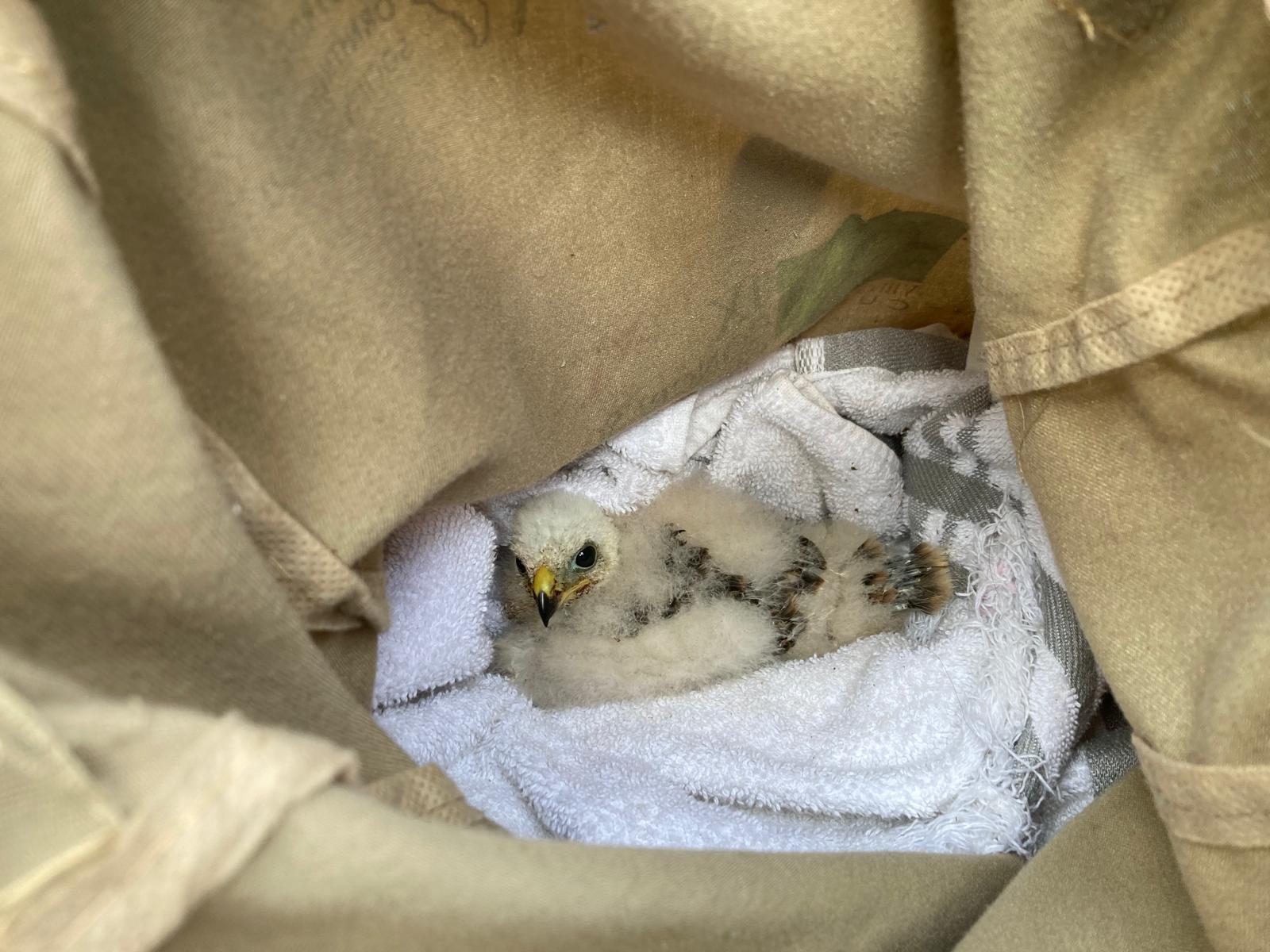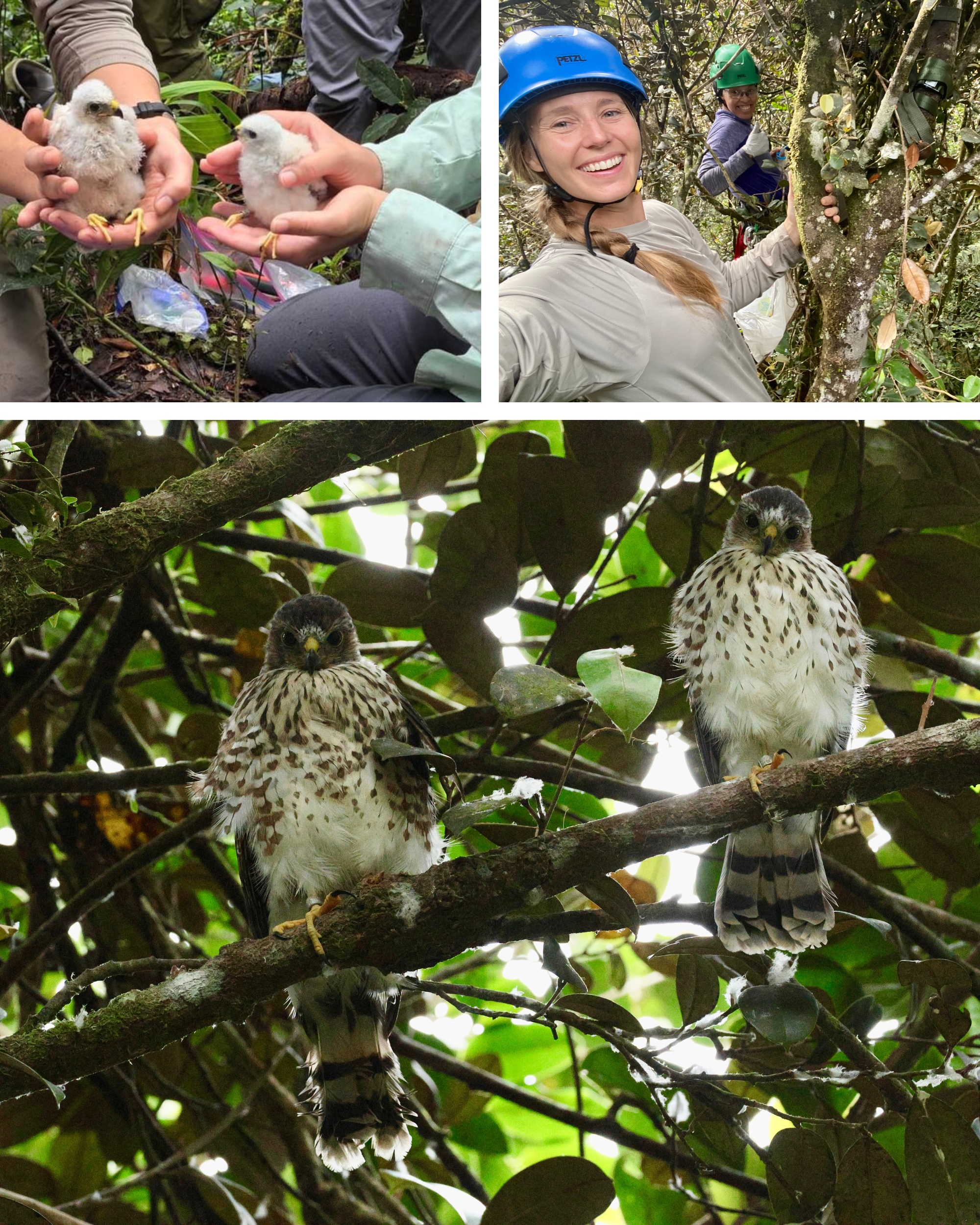Photo by Hana Weaver
The Puerto Rican Sharp-shinned Hawk, an Endangered subspecies found only on the island of Puerto Rico, has been the subject of extensive monitoring and management by our team since 2015. Earlier this year in June, our team discovered a mother hawk had disappeared, leaving two two-week-old nestlings in the nest. Puerto Rican Sharp-shinned Hawks remain in the nest and rely on both their parents until they are around 30 days old. While the father was still actively hunting and delivering food to the nest, males do not have the instincts necessary to pull apart food and directly feed the young (a role the mother plays). As a result, the nestlings had gone without food for several days and, sadly, only one—a female with the leg band 9B, seen below—had survived. Our team knew they would have to intervene to save the remaining nestling.
“Hand-raising nestling raptors alone without siblings or adults present for prolonged periods is risky, as raptors can easily imprint on humans,” says Puerto Rico Program Director Hana Weaver. “In scenarios like this, the best option for the nestling’s survival is to foster them into another nest with similar-aged siblings. But our options for fostering this lonely nestling were limited and the outcome uncertain.”
From the limited options, the team settled on a nest into which to foster 9B which contained two younger males (9B is pictured below at top left with one of these foster siblings). Given that male Sharp-shinned Hawks are about half the size of females, the team was concerned that these smaller, younger nestlings would be accidentally pushed out of the nest or be outcompeted by the larger female for food from the parents. To limit these risks, our team waited to foster 9B until the males were strong enough to stay secure in the nest and old enough to eat without their mother’s help.
During this waiting period, the team hiked into the forest daily and climbed the nest tree to hand-feed 9B, ensuring she received enough nutrition while remaining exposed to wild hawks for as long as possible (one of these site visits is pictured below at upper right.) This plan worked until June 15, when a concerning weather report revealed a new threat to the nestling. “With torrential rains in the forecast, we made the decision to remove 9B from her nest and out of the forest,” reports Hana. The team provided care to 9B for three more days in the safety of their facilities.
On June 18, the team hiked 9B back into the forest and prepared to place her into the foster nest. But, as is so often the case with fieldwork, it wasn’t that easy. Upon accessing the nest, biologists found that it was falling apart and couldn’t safely hold all three nestlings. Acting quickly, the team briefly removed the two male nestlings while they expanded the nest platform. Once the nest was reinforced, all three nestlings were placed in the nest together for the first time. The foster mother immediately accepted 9B as if nothing had changed, quickly feeding and brooding all three of the nestlings together. To ensure enough food was available to the new larger family, the team provided daily supplemental food to the site.
Within just a few weeks, all three young successfully fledged from the nest tree! Sharp-shinned Hawks usually hang around the nest site for several weeks after fledging. Both parents and our team continued to provide food and protection to the young hawks as they learned to fly and hunt on their own. (9B is seen above on the left in the bottom photo, along with foster sibling 9Z.)
“After fledgling from the nest tree, the three siblings were inseparable in the forest, playing and chasing one another for hours at a time, practicing the skills they will eventually use to survive on their own,” says Hana. “We couldn’t be more proud of this family of hawks, from the young female nestling who survived intense elements and near-starvation to her foster mother, a first-time nesting female and just over a year old herself. They really exemplify the resilience of the species and their tenacity to survive.”








